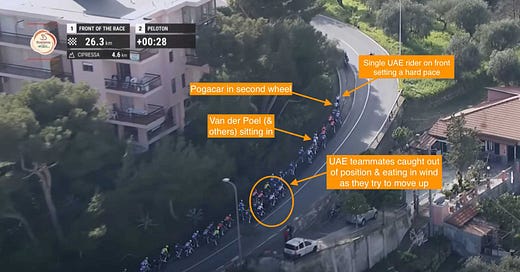Key Takeaways: Milano-Sanremo
Breaking down the key points from the first Monument of the season, how it was won, what went wrong for certain pre-race favorites & what it teaches us about the rest of the season
If there was any lingering doubt about whether the 2024 season was ‘officially’ underway, it was put to bed on Saturday when a handful of the sport’s elite talents battled for supremacy at the first one-day Monument of 2024, Milano-Sanremo. Despite its 288-kilometer course featuring fairly tedious and almost shockingly unselective terrain, the race’s fi…
Keep reading with a 7-day free trial
Subscribe to Beyond the Peloton to keep reading this post and get 7 days of free access to the full post archives.



